When it comes to gardening pistachio tree for the first time, having the background knowledge about it is a must.
So checking out this article is one of the best ways to provide yourself with the information prior to pistachio plantation and harvesting.
Further, if you are planning to grow the tree, you need to know all of the basic information dealing with the general description about it, where and how you grow it, the seeds and the nut tree as well as other related information.
So let’s check out all of the details in the following review sections.
About Pistachio Tree
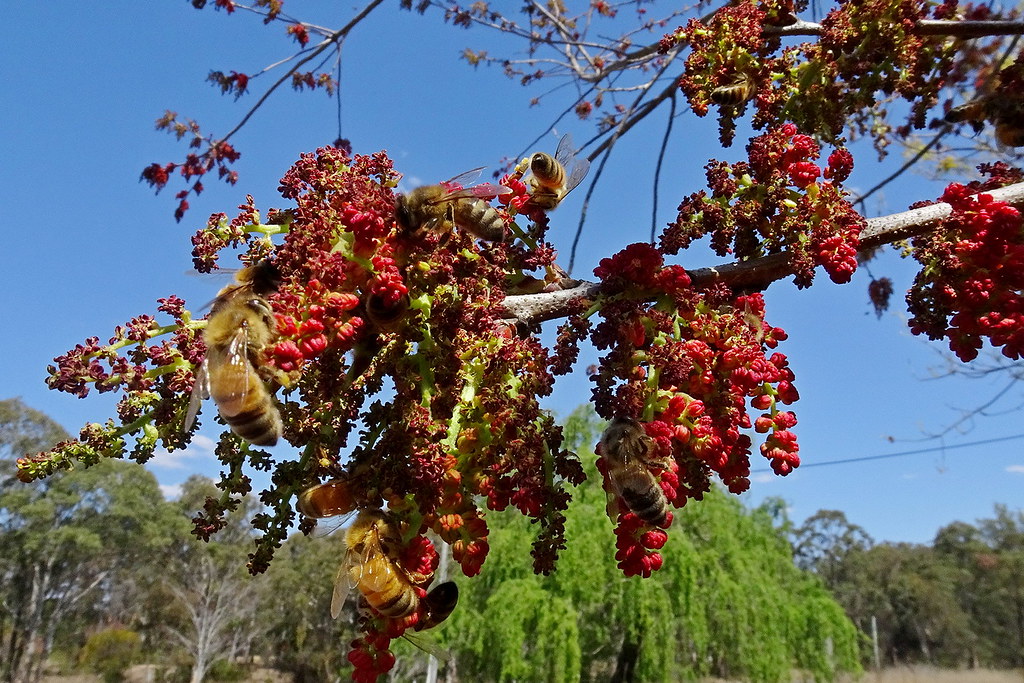
Pistachio or Pistacia Vera is a member of the cashew family. It is just a small tree that is originally growing in Central Asia and the Middle East. This way, the tree produces seeds that people consume them as food.
Scientifically, P. Vera is classified as a plant. Pistachio seeds had already been a common food as early as 6750 BC.
Nowadays, the modern pistachio tree is cultivated in Bronze Age Central Asia. So if you live in Asia, it would not be uncommon to know it.
Pistachio tree size can grow up to 20-33 feet tall and including the one that has long-living and slow-growing trees.
How Do Pistachios Grow?
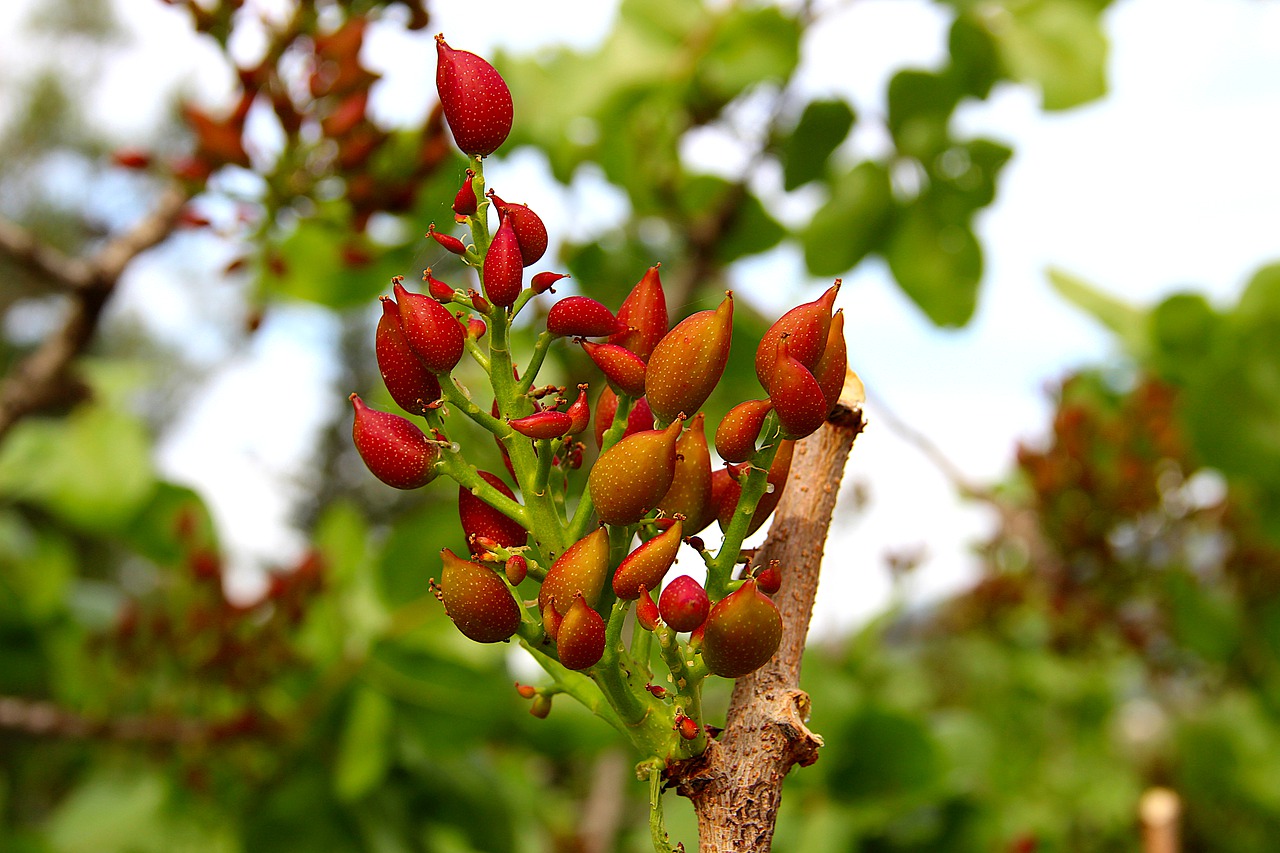
How do pistachios grow? Pistachio tree which you may also know as P. Vera is pollinated by wind.
This means, you need to plan the male and female trees in specific patterns in order to get the benefits of the wind.
Planting this kind of tree requires between 12 and 20 feet of space. Of course, it would depend on the quality of the soil where you are going to plant it.
In this case, most of the nurseries sell the pistachio rootstocks sold in biodegradable containers. These rootstocks can be planted with the tree because exposing the roots has some impacts on the tree.
This way, you must provide the large hole to completely burry the planter.
Once the rootstock trees are planted, you will see they are growing up to 18 inches along with all the lateral shoots nipped. Then, they spread as they wish.
There is a method called T-budding at which you can establish the seedlings in the fall. In the first year, moisture must be sufficient for success plantation.
The budding process is considered done by the indication of the harvested buds on the windward side. This method has been established in California especially in the coastal areas.
How To Grow Pistachio Tree in Pots
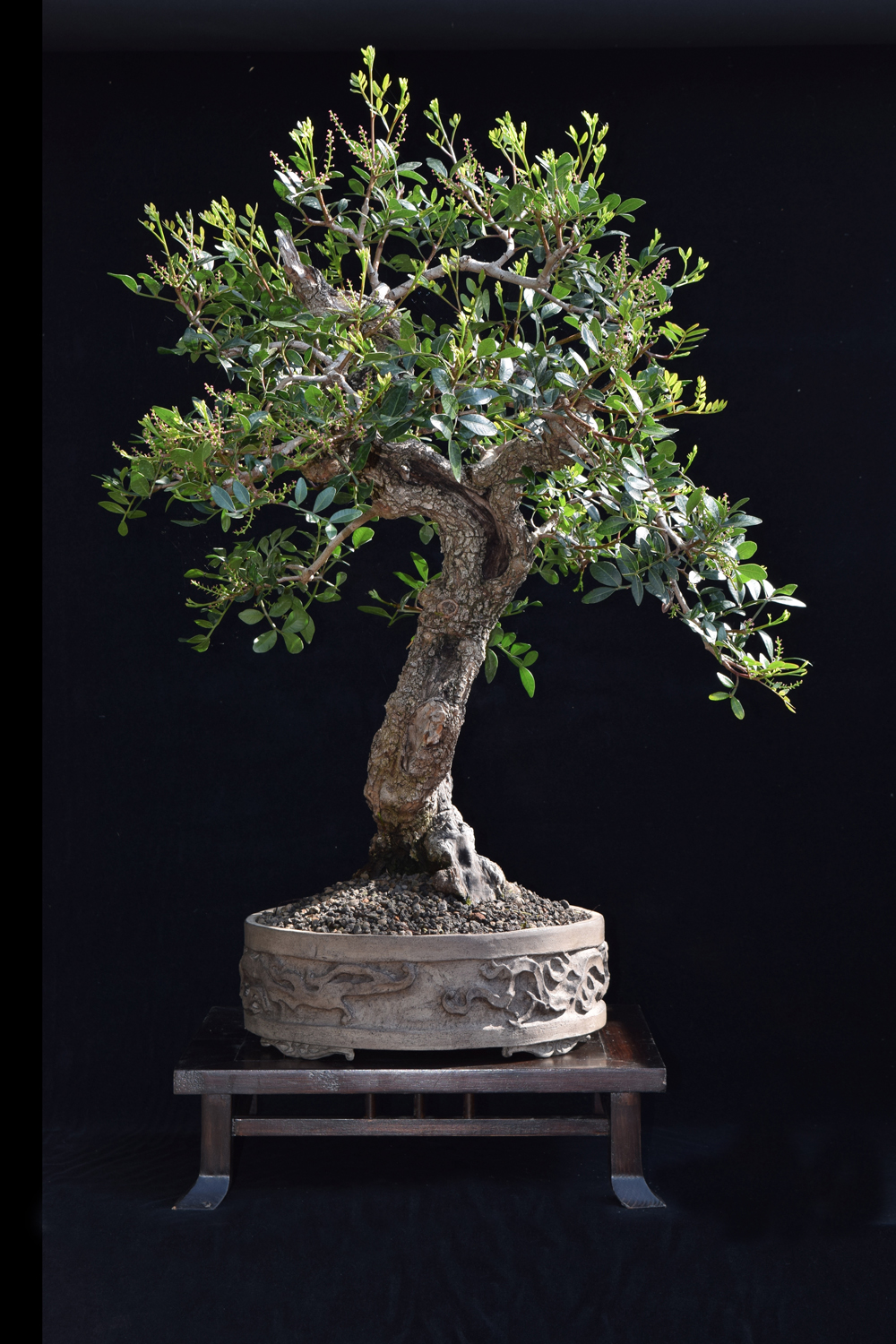
Is it possible to grow pistachio trees in pots? Why not? It is always possible to grow these trees in containers especially for the first three to five years as a seedling.
After this period, the tress can be planted in the garden or large area to let the tree to mature.
Moving the pistachio trees to a garden is important because these species come with the long taproot.
If they stay too long in the pots, the roots can be stunted with the container growth in a long term.
So dot forget move them into the garden after the five years in the pots as seedling.
Where Do Pistachios Grow?
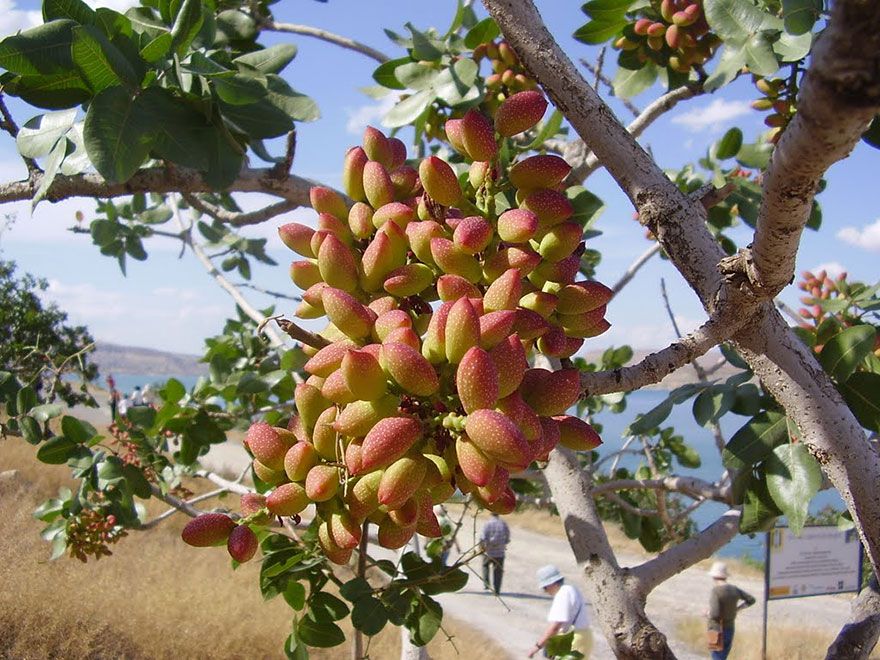
If you want to plant pistachio tree, the next thing to question is “where do pistachios grow?” and find out whether your location is suitable for such tree cultivation.
As we have mentioned, this tree is originally growing in Central Asia. So, it likes the heat.
Based on trusted sources we found, it is best described that pistachio tree grows within the dessert heat. They also mostly grow in New Mexico, Arizona and Southern California.
They can also grow well in other dry and hot areas such as West Texas.
However, the trees need not only a long hot summer but also a cold winter to experience certain times of cold in order to create a dormancy period.
Pistachio Tree Growing Zone
In the United States, 98% of P. Vera trees are mostly cultivated in California, New Mexico and Texas as well as Arizona.
The desserts of Southwest America are too hot in the summer and too cold in the winter to grow this kind of tree.
Such weather doesn’t allow the trees to grow.
Pistachio Tree mostly grows in USDA hardiness zones 7 through 11.
If you are now living in one of the areas we have mentioned above and you are eager to grow the tree, choose the deep and sandy soil which is considered the best for growing pistachio trees.
Keep in mind that the poorer the soil, the closer the trees can be planted together. Considering that pistachio trees are the tap root trees, they need a deep soil to grow.
Pistachio Tree Size
Specifically, the need considerably 7 or more feet.
In most cases, Pistachio tree will be growing up to 20 – 33 feet in height and around it in width.
The usually require some deep irrigations in the winter. However, they are drought tolerant in the summer.
Thus, if you want to grow it, don’t worry too much about not to give it water yet you still need to water it in the winter.
How Will You Harvest Pistachios?
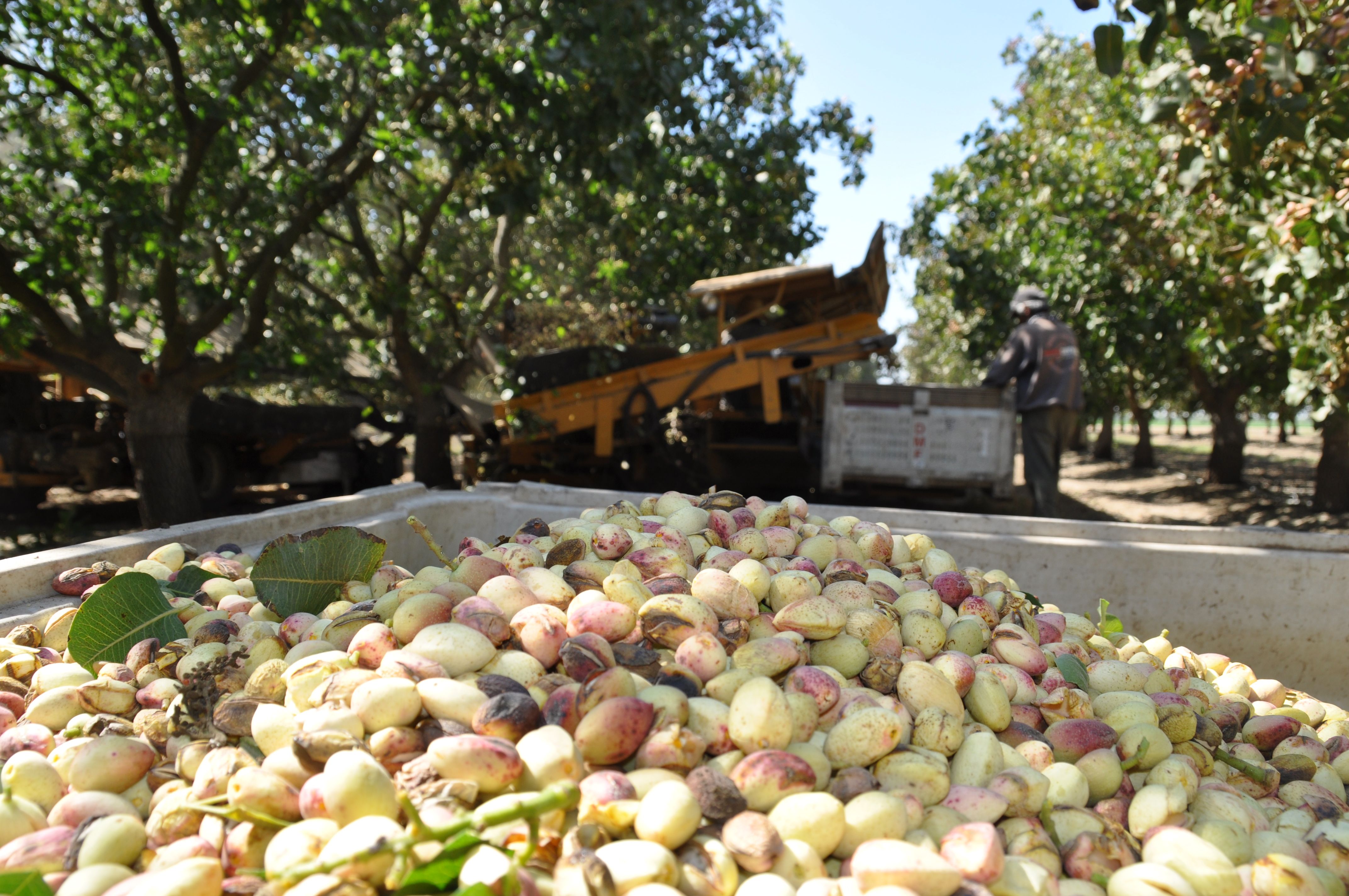
Believe it or not, you cannot expect to fully harvest pistachios productively unless they are a decade or more in age.
But you can relieve when you know the fact that they can bear fruits in their fourth or fifth year after budding. It is a long time, isn’t it?
Once they bear a fruit and the hulls separate easily from the shell, the nuts are ready to take. That’s how you will harvest pistachio fruit.
At this point, you have only 7 to 10 days of optimum harvest before the nuts are staining as they over-ripen.
To avoid the staining, nuts must be shelled or cured at the same day. This will require 5% moisture. Remember, pistachios trees can reach a ripe age.
It is considered normal that they go to biennial production along with a heavy crop every other year.
Pistachio Seeds
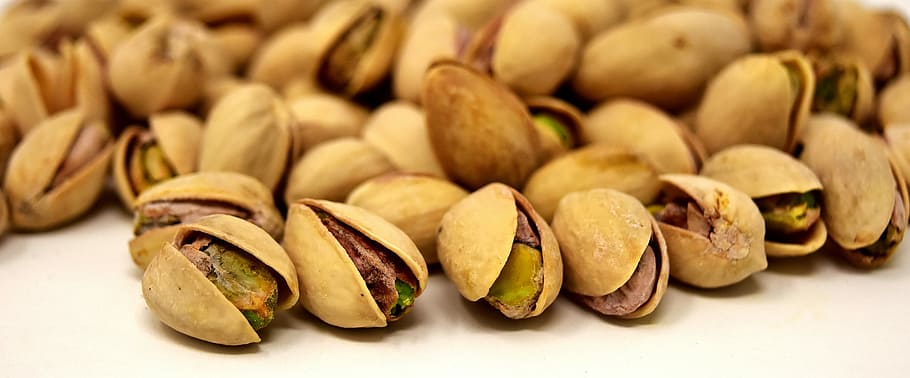
Pistachio tress produce fruits which are drupe, containing elongated seeds which are the edible portion.
People commonly think that the seed is a nut which is specifically a culinary nut. So, it is not considered as a botanical nut.
Pistachio fruit comes with a hard, cream-colored exterior shell and the seed has a mauve-colored skin and light green flesh along with a distinctive flavor.
In general, there are around 50 kilograms of seeds or around 50,000 seeds produced by each of pistachio tree every two years.
In these modern years, most of pistachio seeds are picked and processed by machine. This way, the shell will remain unstained.
Thus, dyeing is considered unnecessary. Dying will be necessary only to meet the ingrained consumer expectations.
Pistachio seeds contain lots of nutrition. In general, raw pistachio seeds are 4% water, 28% carbohydrates, 45% fat and 20% protein.
If you consume a 100 gram amount of pistachio seeds, you will get approximately 562 calories out of the seeds. They are rich in protein, dietary fiber, some dietary minerals and B vitamins.
Pistachio seeds are also the moderate source of riboflavin, calcium, folate B-5 Vitamin, Vitamin E and Vitamin K.
Raw pistachio seeds also contain saturated fats, monounsaturated fats and polyunsaturated fats.
In comparison to the other nuts, pistachio seeds have a lower amount of fat and calories but they have a higher amounts of potassium, Vitamin K, y-tocopherol and some certain phytochemicals like carotenoids and phytosterols.
Pistachio Plants
As a plant, pistachio tree needs specific climate to grow well. Thus, it is not considered an option for everyone.
In this case, temperature is the biggest factor to consider along with the humidity and rainfall of your location.
Hot temperatures are highly needed during the days to grow the trees. Luckily, they don’t need such high humidity or wet soil.
They grow best in sandy, loamy and well-draining soil where deep watering are best.
Avoid planting the trees in the heavy soil since the trees’ taproots are very long. They need to reach deep into the ground.
Sunlight Requirements
Pistachio plants require lots of sunshine and thrives in hot and arid climate. Just because they are very drought-tolerant and like arid landscape better doesn’t mean that you can leave them without enough water.
These kind of plants needs still a plenty of water to allow you to harvest more. Further, extra water is primarily necessary during the summer. Keep in mind that you must let the water to drain before watering again.
One thing to remember, pistachio plants do not do well in standing water.
To survive in the winter, pistachio plants require colder temperature or humidity which is 45 degrees Fahrenheit or below. However, they cannot tolerate frozen ground.
Soil Requirement
Though most tropical plants like hot temperature and humidity, these ones do not like too much moisture.
If you are planning to grow pistachio tree, having a soil test is important before giving fertilizer.
If your soil is lack of nitrogen, phosphorous or potassium, you can opt fertilization to meet the nutrient needs of the plants. We have an article about how to add nitrogen to soil, which you may check.
In this case, giving fertilizer will best to give in the late winter to early spring to help produce a nice harvest.
Are Pistachio Plants Toxic?
Are pistachio plants toxic? Due to the oxidizing toxins like tannic and gallic acid contained in pistachio plants, blood disorders can occur in horses if they are eaten too much by those animals.
This is because horses come with a particular susceptibility, making the pistachio plants not suitable to plant in the area where the horses can access easily.
This way, if the horses eat too much pistachio plants, there will be a variety of symptoms including red-colored urine, colic, weakness, lethargy, jaundice and coordination issues.
Pistachio Nut Tree
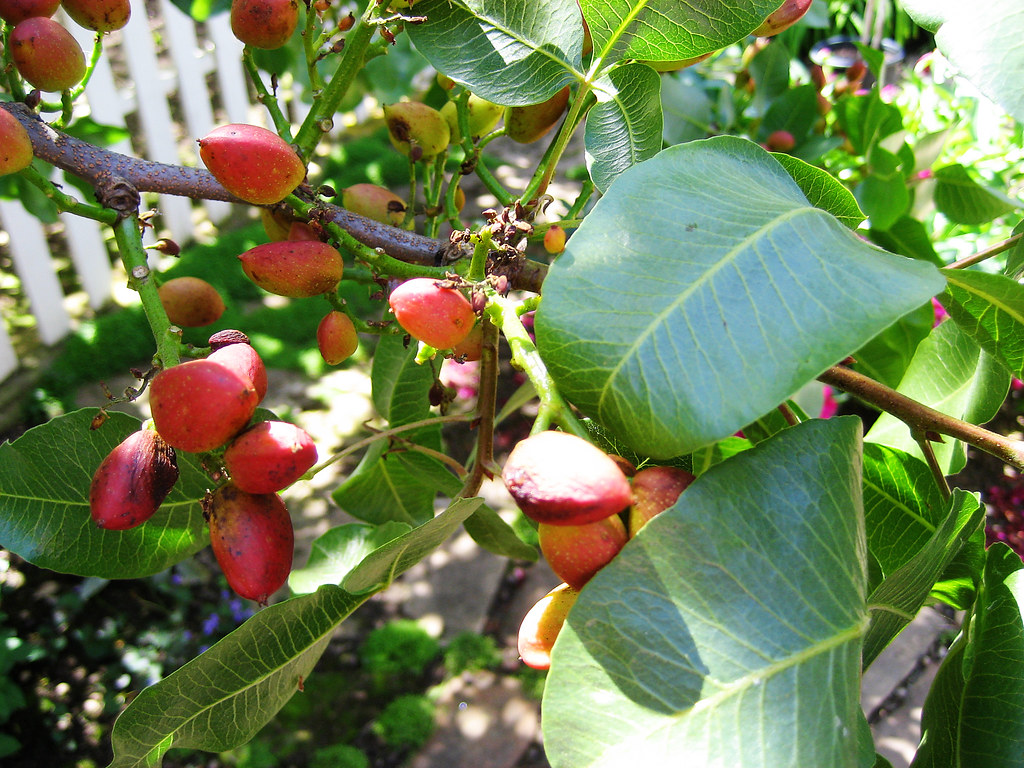
Pistachio has become one of the most-wanted nuts these days. Not only because they have the lowest calories but they also rich in antioxidants, phytosterols, unsaturated fat, carotenoids, vitamins, minerals and fiber.
There are 11 species of pistachio nut trees but only P. Vera that is grown commercially.
Pistachio trees are originated from Central Asia but now they are growing primarily in Turkey, Afghanistan, Iran, Italy and Syria where the arid climate of Asia is optimal for the trees growth.
Pistachio nut trees are grouped into fruit trees, therefore, pruning them is essential to produce high quality fruits while it is also controlling their growth.
Four young trees, you can pick up three to five branches you can use as scaffold braches or as the primary structure of your pistachio tree in April which is the first growing season.
Pick up those branches which are equally spaced around the trunk but not across one to another along with the lowest branch which is 24 to 32 inches or 61 to 81 cm above the soil.
Later, cut all other branches below this.
Remove any upper branches shading the trunk of the nut tree and pinch the not-scaffolded braches 4 to 6 inches from the trunk. In June, you can prune the scaffold branches 2 to 3 feet to promote the side branching.
This will also allow for lateral shoots to provide the truck with the shading as they grow.
The nut tree will grow taller if you choose the secondary scaffold braches.
Pruning the pistachio tree two or three times a year is possible in summer and spring as well as winter.
Common Pests and Disease in Pistachio Tree
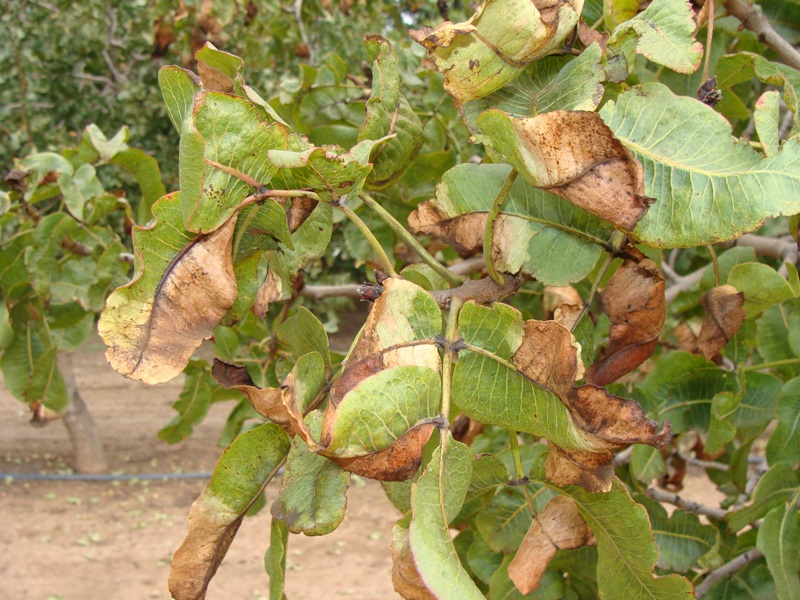
Is there any common pest or disease in pistachio trees? Surely there is.
If the trees are grown in overly moist conditions (probably because irrigation, spacing or climate), it would be possible to experience a disease called Alternaria Late Blight where the black spores are developing on foliage lesions.
In wet springs, there is also a disease called Botryties that occur in the male trees while verticillium wilt can also be very destructive that even cause death to the trees.
Conclusion
Pistachio tree is a kind of nut tree that is also classified into cashew family. It is consumed as food that contains lots of nutrients.
This tree is originated from Central Asia and Middle East and now growing more in Arizona, New Mexico, Texas and California.
Pistachio tree has a long taproots that make it suitable to grow in sandy soil. It can grow well in hot weather.